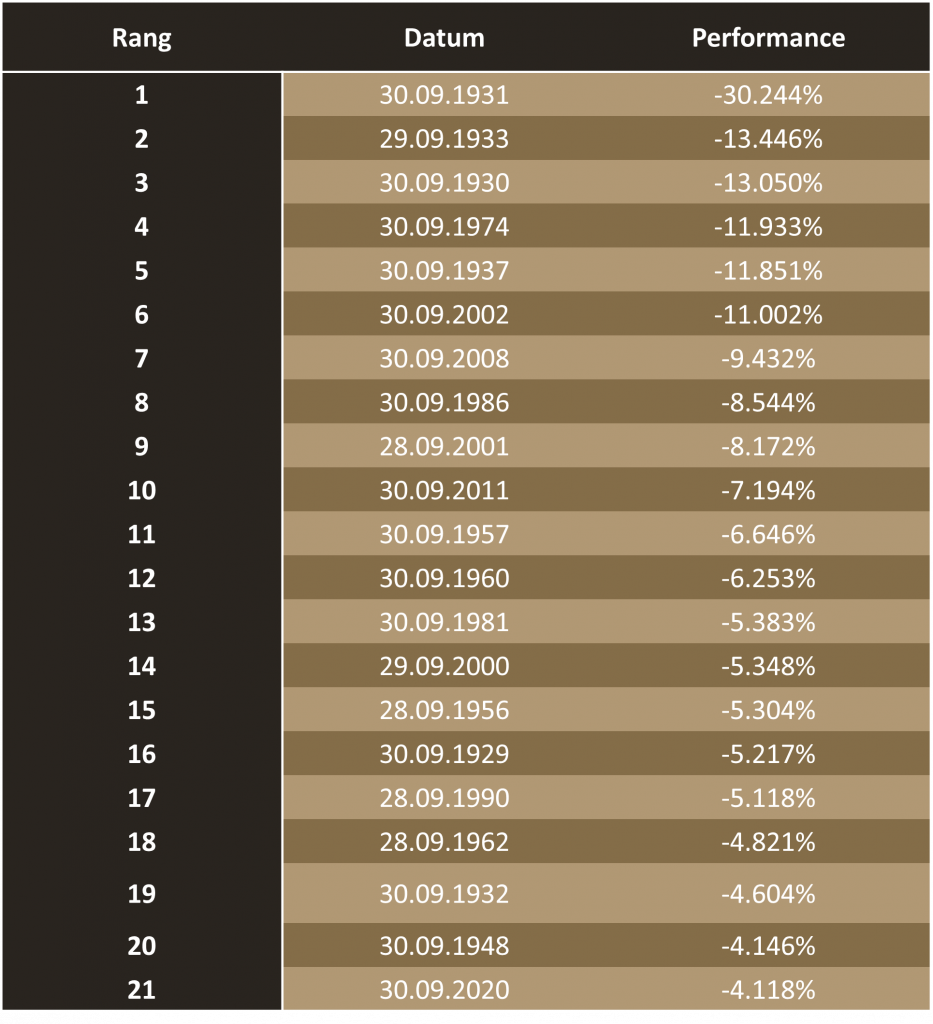Stock markets closed the month of September 2020 with a considerable decline of 4.12%. Following total gains of 40.12% over the preceding five months, this brief respite might even be justified. Still, as losses were indeed substantial, let us compare last month’s events with the stock market performances of the respective Septembers of preceding years. Doing that, we traced back the S&P 500’s September performance until 1928 and found that last September finished 21st on the eternal best list of “the worst Septembers”.
In order to satisfy the curiosity of some of our readers, we have depicted those Septembers with the highest drops in share prices in the table below. At this point, we should note that since the year 1928 (93 years), there have been 50 negative Septembers in total, with the average performance being -4.50% (the average performance of 93 years is at -1.00%). September 2020 is hence one of the “less good” months over the course of this time period.
Table 1
As we can see, all other negative months registered higher losses than those occurring in September 2020. In light of the breathtaking gains over the last months, one can therefore conclude by saying that the negative performance of -4.12% is bearable.
Since the year 2000, the month of September registered a negative performance ten times (Table 2).
As the past is only of interest to us in the sense that it enables us to draw certain conclusions about the future performance of stock markets, we will now examine what influence a “negative” September had on the following month (Table 3).
Following the twenty worst Septembers, nine out of twenty Octobers also registered a negative performance. As already mentioned, we have had nine negative Septembers since 2000 (excluding this year’s September); from those nine cases, only two of the following Octobers were negative, namely October 2000 with a performance of -0.50% and October 2008 with a performance of -16.79%. Both of those years were election years in the US. In addition to that, they were also years of crisis, for which we could draw certain parallels. For that, we would have to add another variable, which is that in both years, a new President succeeded his respective predecessor, who had been in the White House for two terms. In 2000, George W. Bush succeeded Bill Clinton and in 2008, Barack Obama succeeded George W. Bush. Hence, we would have to evaluate this variable differently for this current election year.
We do not wish to and, indeed, cannot predict what will come in October 2020. This is exactly what makes markets so exciting.
Stay tuned!
Source of data: The calculations are based on data from www.yahoo.finance.com
